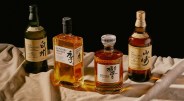Despite the folksy stories behind so many whiskey brands, many are run by companies with market caps approaching $100 billion. This doesn’t mean brands don’t have histories of their own, of course, or that those highly marketable histories aren’t based in truth, but it does provide some perspective. For the vast majority of America’s favorite whiskey labels, the image of a gruff whiskey man toiling away in a rickhouse, building the perfect whiskey, is, in 2021, high fantasy.
Instead, they use their billions in capital smartly. The modern macro-whiskey production site is an array of measuring instruments and gauges with computers monitoring everything. To different degrees, this is how Jim Beam, Heaven Hill, Jack Daniel’s, Four Roses, Buffalo Trace and the rest bring about consistency, incremental quality improvements and experimentation. In the aggregate, this is excellent for whiskey drinkers.
That said, to better understand who’s making what whiskey and how it’s all related, one must know who owns who. These are the parent companies of the brands who hold court in the modern whiskey world.
(Note: not every whiskey brand is represented in the images for each respective parent organization. Brands were chosen by popularity. For comprehensive lists, visit each company’s brand page.)
 Gear Patrol
Gear PatrolFormally founded in 19th century by a French businessman in New Orleans, Sazerac is one of the largest privately owned spirits businesses in the world. Its asset sheet is a who’s-who of whiskey mania — Buffalo Trace, Weller, Blanton’s, Pappy (technically a joint venture between the Van Winkle family and Buffalo Trace Distillery) and on and on. Its whiskey holdings aren’t limited to high-profile, high-price whiskeys, though; the company owns Fireball and Southern Comfort, too.
For most whiskey drinkers, it’s Buffalo Trace Distillery and the products made under its flag that demand the most respect. The Frankfort, Kentucky distillery was previously called the George T. Stagg Distillery and has become home to what is likely the most robust lineup of premium bourbon in the world. The fact that the bourbons made there (and elsewhere in the Sazerac portfolio, like at the Barton 1792 Distillery and A. Smith Bowman Distillery) are all near-household names is a testament to Sazerac’s deftness in the art of the acquisition. Starting in 1989 with a handful of former Seagram’s Distillery products (one of which eventually became Fireball, one of the best-selling booze SKUs of the 21st century), Sazerac has bought up, rebranded, repositioned or remade brands into superior versions of their past selves.
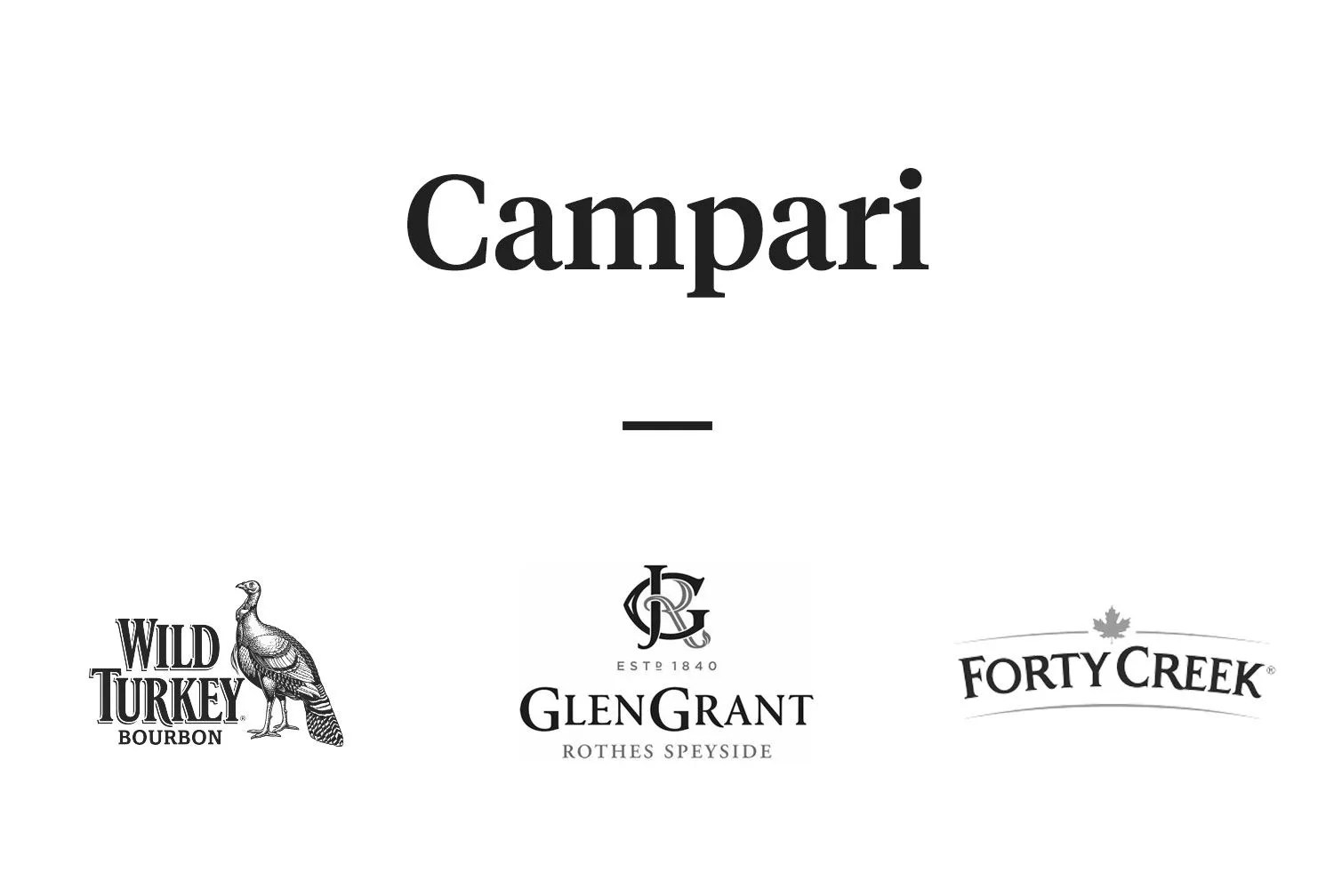 Gear Patrol
Gear PatrolCampari Group, named after the Italian apéritif that launched the company, is one of the less prolific players in the whiskey world, but it does own Wild Turkey, one of the most iconic brand names in American whiskey.
Campari purchased Wild Turkey and its various sub-brands (Russell’s Reserve, American Honey, Rare Breed, etc.) in 2009 along with its Lawrenceburg, Kentucky distillery. As far as impact on the whiskey world, Campari Group is a lightweight; but the company’s breadth of brands in nearly every booze category has made it one of the world’s foremost drinks companies.
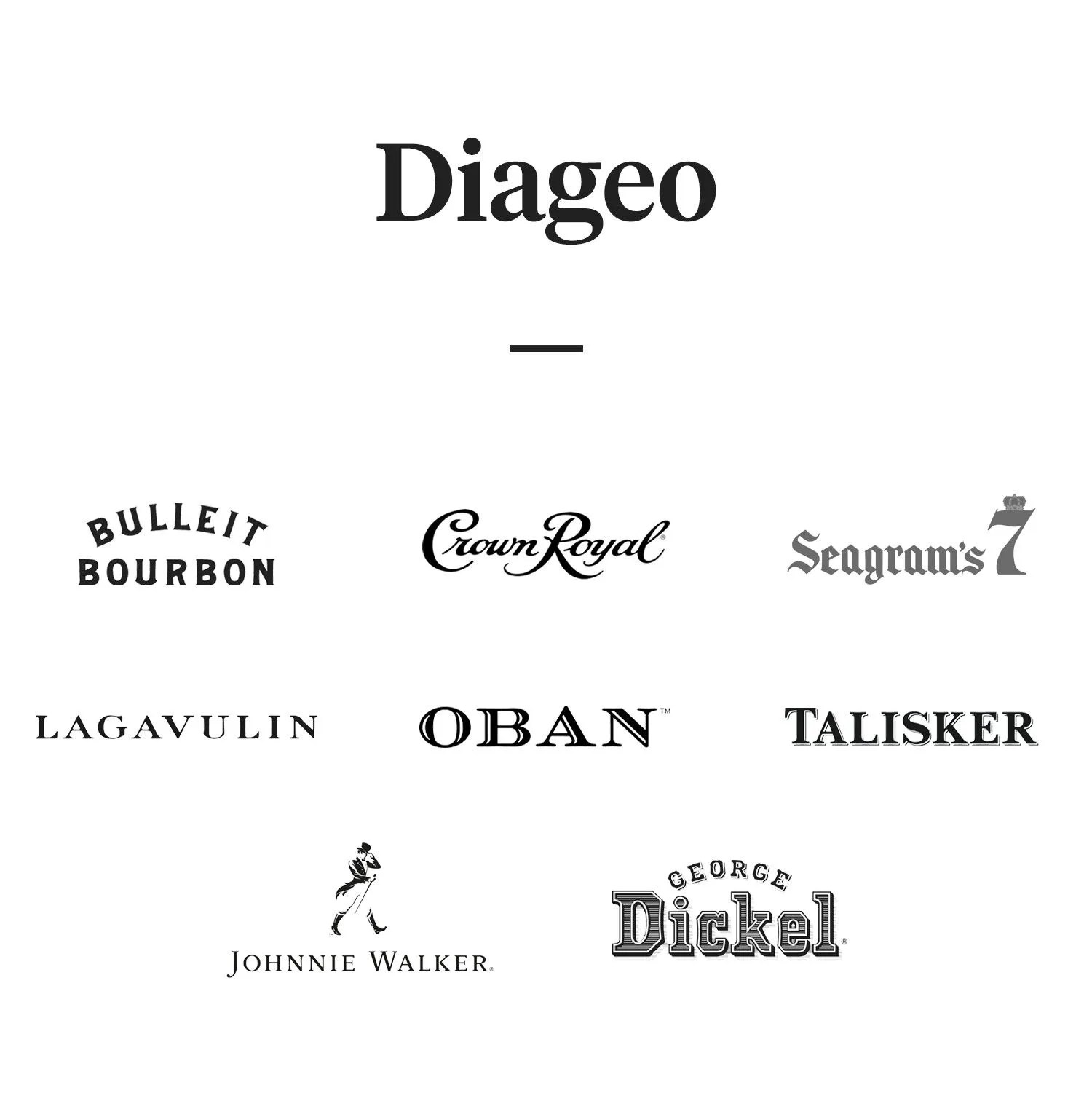 Gear Patrol
Gear PatrolDebatably the world’s single largest distilling companies, Diageo is a corporate behemoth whose highest-profile brands seemingly reflect that. They are the mainstream of the mainstream: Bulleit, Crown Royal, Johnnie Walker, Lagavulin and more (and while obviously not a spirit, they also own Guinness).
More than American whiskey, Diageo is known for scotch whisky; the brands under the Diageo umbrella also produce more scotch whisky than any other company in the world. After Johnnie Walker, the company also owns Oban, Talisker, Lagavulin and a number of smaller labels and brands exclusive to other parts of the world. And this is all before mentioning the might of Crown Royal, the best-selling Canadian whisky, which Diageo purchased in the early 2000s for $5 billion (Captain Morgan rum was also part of the deal). When you think Diageo, think big.
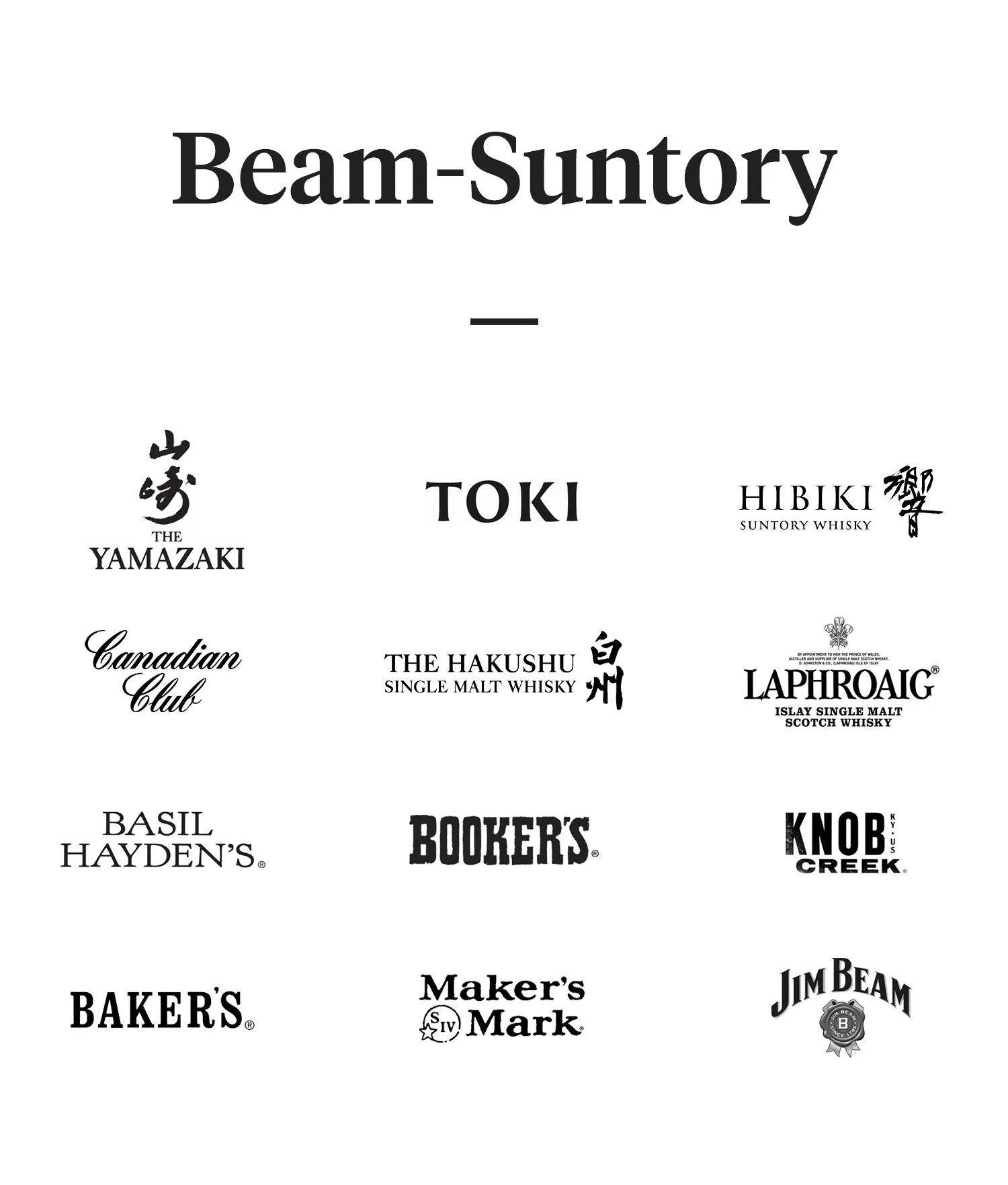 Gear Patrol
Gear PatrolBeam-Suntory is an American company that makes scotch whisky, bourbon whiskey, rye whiskey, Japanese whisky, Irish whiskey, Canadian whisky and even Spanish whisky. Beam-Suntory itself is a holding of a Japanese company called Suntory Beverage & Food Ltd., which is, of course, a subsidiary within Suntory Holdings. By volume, the company is the third largest distiller in the world (behind Diageo and Pernod Ricard). A lot of that is whiskey.
The North American wing of the company owns Maker’s Mark, Knob Creek, Booker’s, Basil Hayden’s, Canadian Club and more. Its list of scotch whisky is slightly shorter, but no less gaudy: Laphroaig, Bowmore, Auchentoshan and more. Then there are the Suntory-produced whiskies, which have come to embody both the extreme capabilities of whiskey makers from non-traditional whiskey regions and, for some, the pinnacle of whiskey hype culture. You’ve got a better chance at seeing a unicorn than finding bottles of Yamazaki, Hibiki and Hakushu whiskies at their retail prices. Generally, Beam-Suntory is responsible for a serious amount of excellent whiskey.
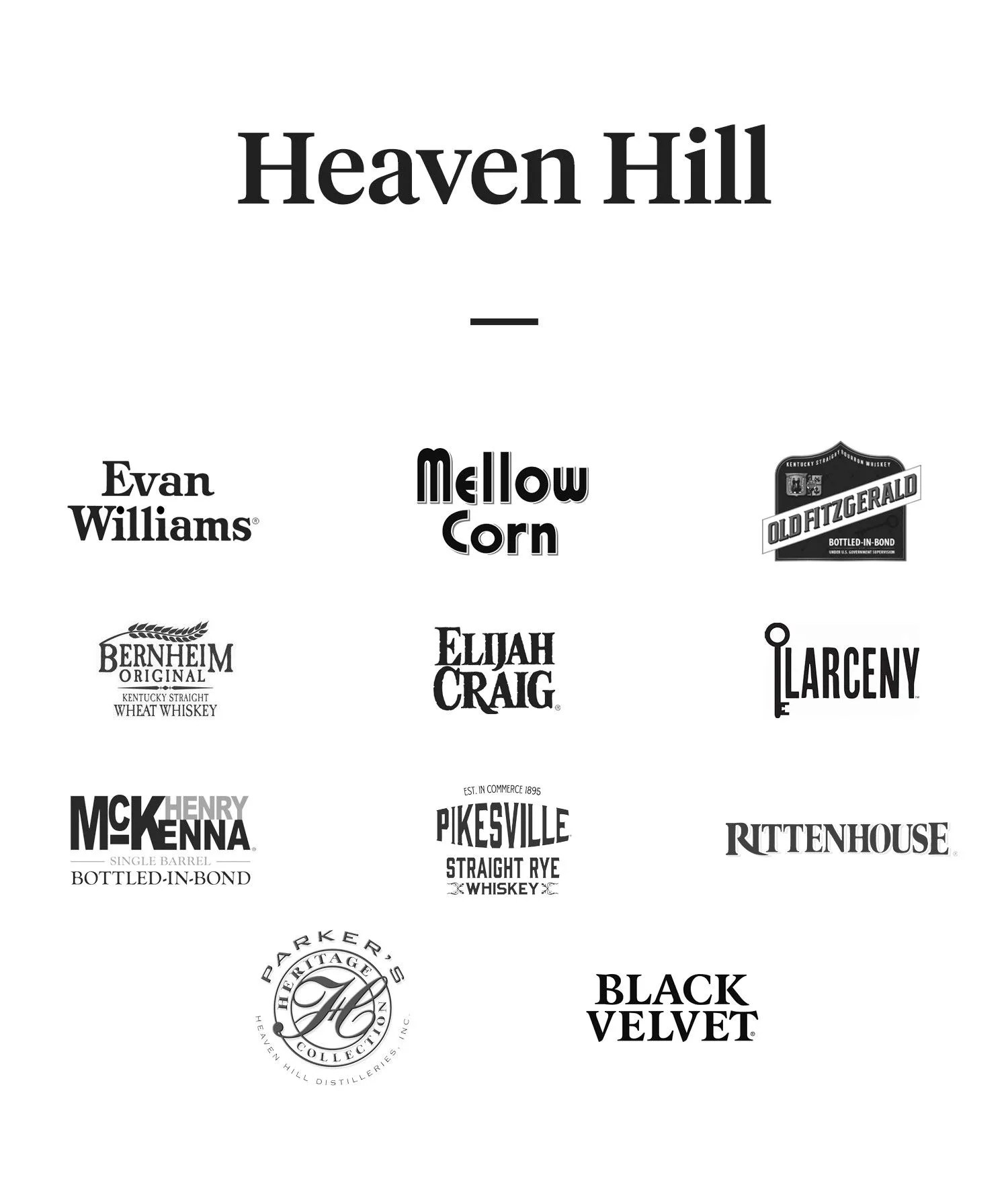 Gear Patrol
Gear PatrolAlong with Sazerac (to a certain extent), Heaven Hill is something of an outlier on this list. It is a privately held, family-owned company that is the only Kentucky whiskey maker that remains locally owned. The Shapira family helped found the distillery (with a member of the Beam family, no less) and steadily bought out its other founders. Today, Max Shapira is the CEO and a number of other Shapiras work within the company.
Though the company has greatly expanded its brand sheet in recent years, it’s most known for its collection of fabled whiskeys; award winners like Elijah Craig, Heny McKenna, Old Fitzgerald, Larceny and Pikesville Rye, as well as unbeatable value brands like Evan Williams and the inimitable Mellow Corn.
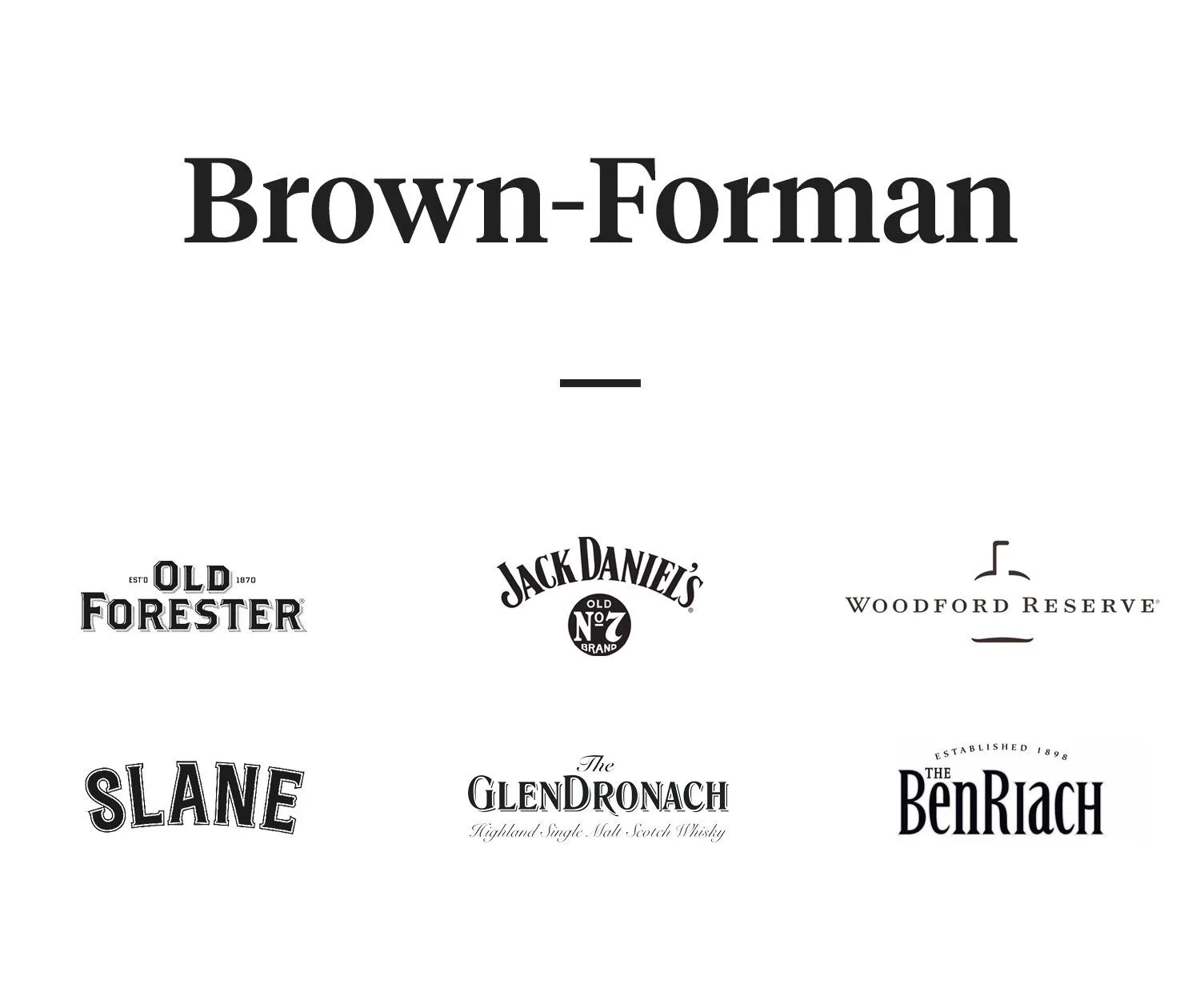 Gear Patrol
Gear PatrolA semi-family affair. The Brown family controls the majority of voting shares in the company, and thereby one of the largest American-owned distilling operations. Its brand lineup is small but powerful, headlined by the all-conquering Jack Daniel’s brand, which remains the world’s best-selling whiskey.
Brown-Forman’s other whiskey lines aren’t as impressive from a numbers perspective, but fill out a healthy whiskey bullpen nicely. Old Forester offers value bottles as well as a number of high-profile limited releases like its Batch Proof offering and Birthday Bourbon, while Woodford Reserve offers well-crafted, lower proof entry points into more premium bourbon. While lesser-known, Cooper’s Craft offers experiment whiskeys for those interested in one of Brown-Forman’s largest assets: its own cooperage. To this day, it is the only major distiller to own its own barrel making shop, lending it the unique ability custom-build barrels and experiments on the fly.
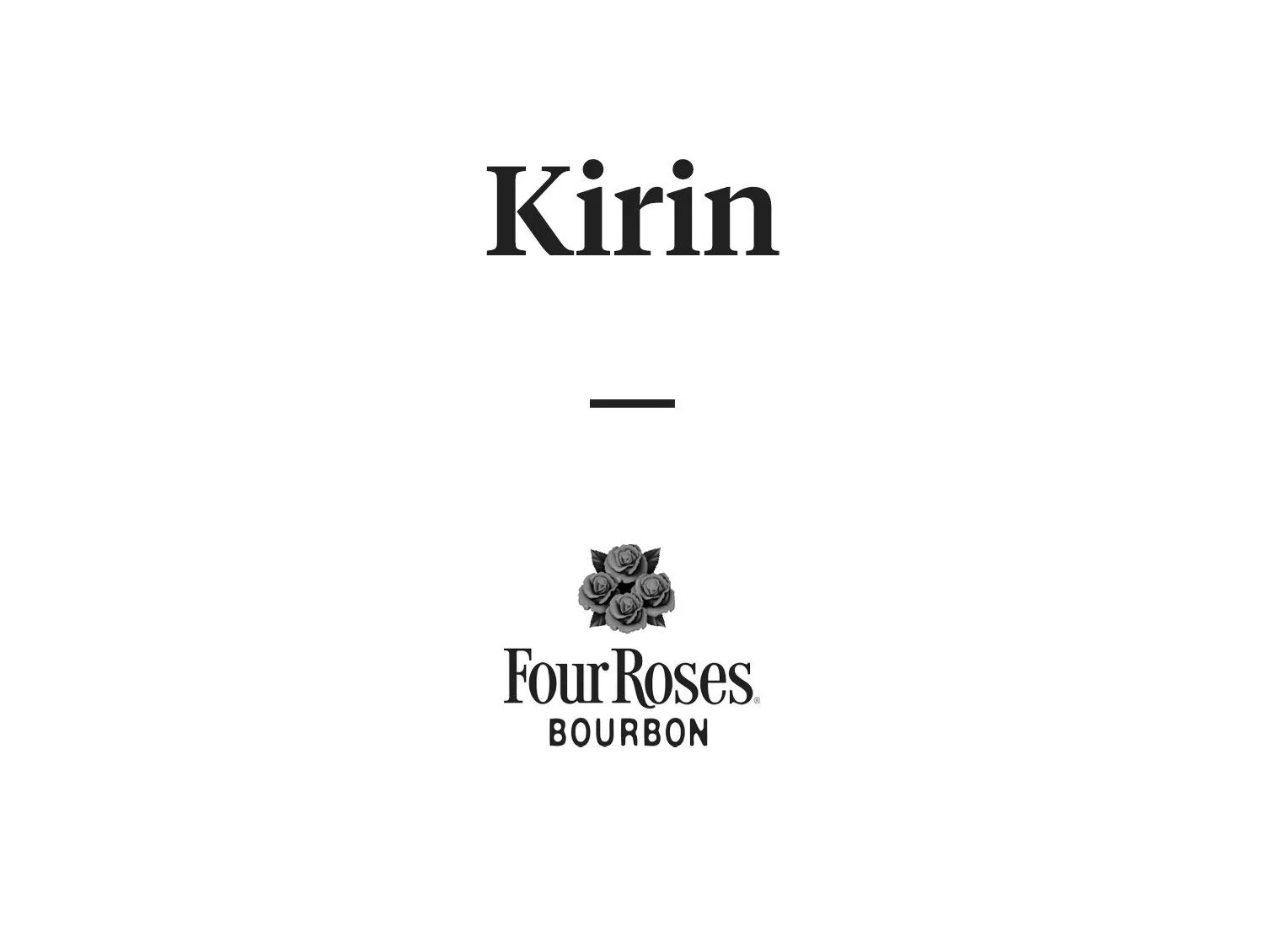 Gear Patrol
Gear PatrolIn Kirin’s mighty beverage portfolio, Four Roses stands alone. Four Roses’ history is one of the most unique of all major whiskey makers (there is ongoing debate on where the name comes from, when the company was founded and so on).
By the 1940s and early 1950s, the company which had been America’s most popular bourbon a short time before, was flailing. Instead of folding, Four Roses was fired to emerging markets all over Europe and Asia in search of a new foothold. In Japan, it found one. The Japanese market drank it up and made it the most popular bourbon whiskey in the country, effectively saving the company from ruin (there are Japan-exclusive Four Roses expressions to this day).
While it was dominating overseas, Four Roses had fallen off the horse in the States. The whiskey was, to put it lightly, not good, and also not bourbon. It had been selling Canadian whisky to America while producing high quality bourbon whiskey to sell abroad. After a series of corporate takeovers and handoffs, Kirin secured the Four Roses of today by discontinuing the sale of the lower-end whiskey they’d been selling in favor of Kentucky bourbon whiskey.
(Editor’s Note: for those interested, Jim Vorel’s story on the history of Four Roses is an excellent, detailed overview of the company’s timeline.)
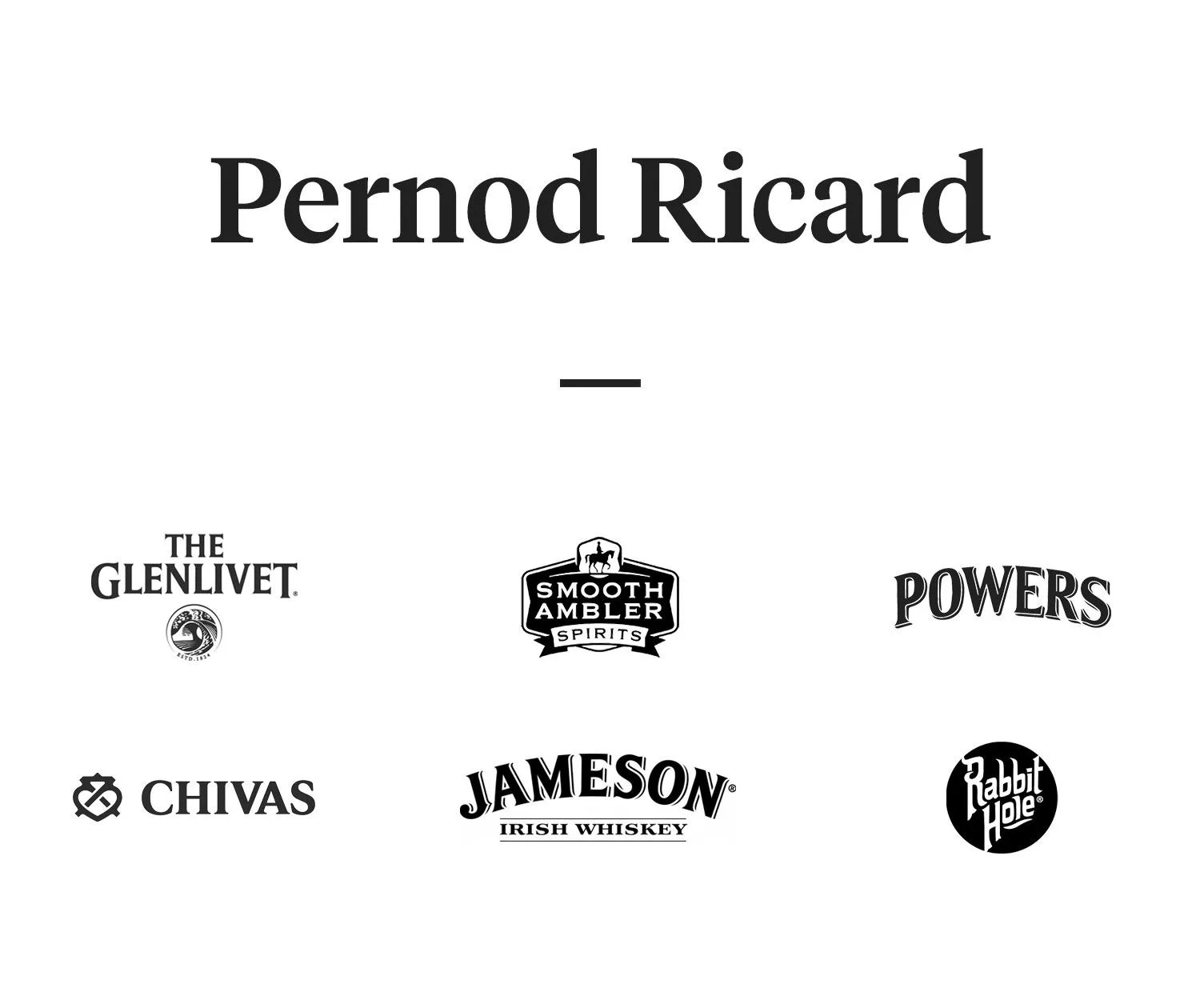 Gear Patrol
Gear PatrolPernod Ricard is one of the three largest distilled booze makers in the world, and, a bit like Diageo, its brands are glossy. Jameson, Chivas Regal, The Glenlivet are the starters, but the bench is packed with talent, too, with the likes of Jefferson’s, Smooth Ambler, Powers Irish Whiskey, Green Spot and more waiting in the wings. But unlike Heaven Hill, Brown-Forman or Beam-Suntory, Pernod Ricard’s whiskey holdings are a very, very smart part of its enormous alcohol-producing apparatus.

